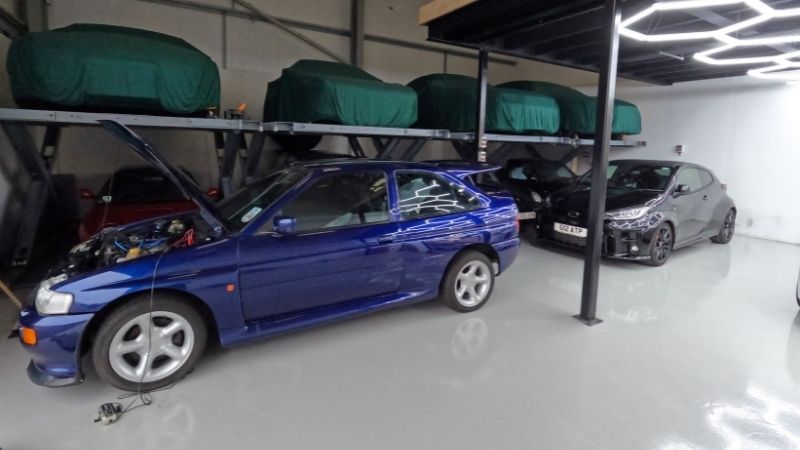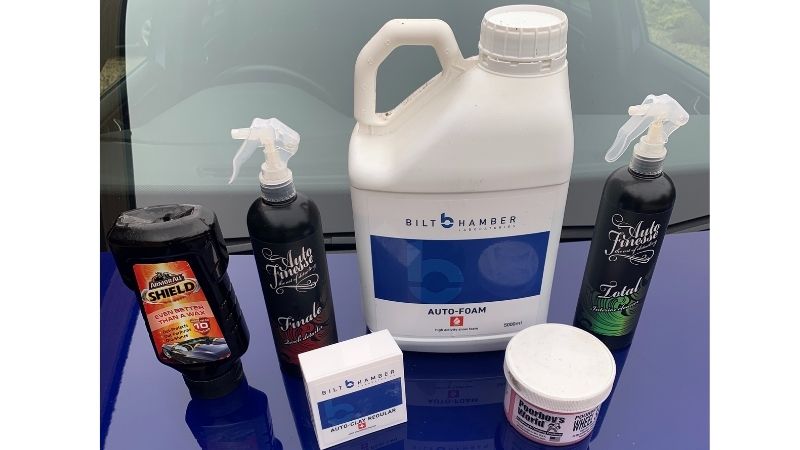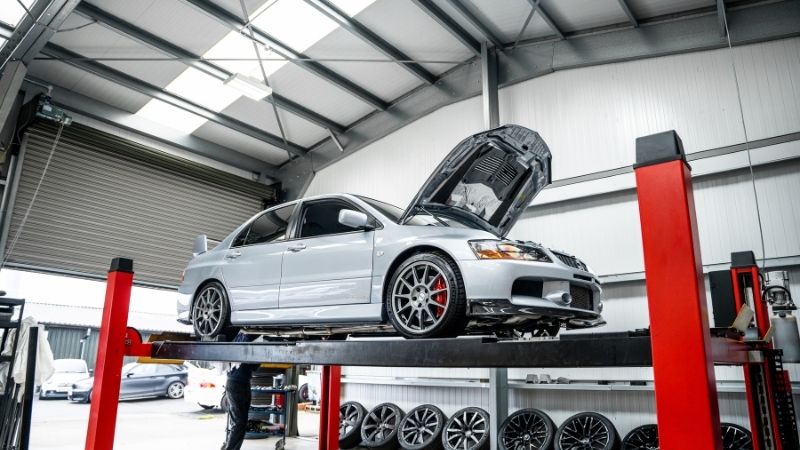Welcome to another Auto Talk blog! I aim to publish ideas and news from Auto Torque, our customers, and the world of automotive, much more regularly than I have over the past year or so. This one deals with a very seasonal matter. I hope you enjoy it; please let me know.
The arrival of persistent autumn rains and leaf fall usually translates into the onset of greasy roads, and the decisions of many owners to put their cars away for winter. For those of us lucky enough to have this choice, there are a myriad of considerations, including security, costs/benefits, preventative maintenance, and interior and exterior care. I therefore wanted to share my top tips to try to help you plan and prioritise according to your own circumstances. I will say at the outset that many of these considerations are also relevant for our daily vehicles, but the emphasis on cleaning road grime – particularly grit and salt – must be paramount. A regular thorough pressure wash to include the wheel arches and as much of the underneath as possible, is very important.
- If you do intend to store your car, then try to ensure a dry, ventilated, and secure location. If it can be vermin proof, then that’s even better. Use mouse traps and/or a plug-in ultrasonic deterrent if you suspect any mice activity – I have found they are particularly partial to the cable sheathing on the wiring looms of many vehicles!

- Winter dishes up two battery draining realities – inactivity and cold temperatures. I use a CTEK trickle charger, which is designed to be left connected constantly and which carefully and automatically maintains your battery. On certain vehicles (such as the Nissan GT-R) the small battery can’t provide more than perhaps a week of supply – even in the summer months – due to the constant drain from the Tracker and alarm system. Given that a good CTEK charger is around half the cost of a new battery and prevents all the faff when a car fails to start, I recommend investing in one as soon as possible.
- Those cold temperatures and lack of use affect other items too. It’s a good idea to brim the tank with super unleaded before storing, for three reasons. Firstly, you should regularly start and run the engine as I go on to explain in a moment, and secondly it will prevent moisture building up inside a partially empty tank. Thirdly, all petrol degrades over time, so if you fill with super unleaded it will retain more octane value than regular unleaded by the time you drive the car again in the spring. When you bring your car back onto the road, I suggest driving it off-boost and very considerately, until you can use up the old and refill with fresh fuel. Many sports cars have switchable engine maps: select the lowest RON map to further protect the engine from an over eager right foot!
- The car should be started, and the vehicle moved (even slightly) if possible, every 2-3 weeks to keep the fluids circulating, to prevent the drying and shrinkage of seals and bushes, to stop pads sticking to discs, and flat spots developing on the tyres. Take the opportunity to check the tyre pressures (they’ll probably need some air, of course), and fluid levels BEFORE starting the car. You should run the engine for 10-15 minutes or so, until all the fluids are up to normal operating temperature.
- So, it’s always preferable to have fresh engine and drivetrain oils and coolant – if they are going to be due soon in the new year – than to store with old fluids, particularly the coolant. Having it serviced promptly, perhaps BEFORE it goes into any hibernation, will mean that the engine is protected with the corrosion inhibiting characteristics of new fluids, and any looming issues can be dealt with calmly instead of realising (too late) that you have problems when you take it out somewhere important in the new year. That’s also true for critical consumables such as worn brake pads (which you don’t want to be reminded of AT ALL on your first spirited drive!) or even an aircon re-gas, which you don’t want to fail on that first 20C spring day!
- If kept out in the elements, then invest in an external car cover, and an internal one if kept inside. Make sure the cover is breathable to prevent moisture being trapped.

- Winter is the ideal time to show your vehicle some extra love. There are plenty of interior and exterior detailing jobs that can be done. Deep cleaning, clay baring, followed by your wax or coating of choice, a wheels-off under-arch clean, and if it’s really cold detailing the (relatively warmer!) interior, are – ok, nowhere near as exciting as driving – but at least you have plenty of time on your hands to get it really ready for the spring! I use and recommend Bilt Hamber Auto-Foam, and their Auto-Clay, Auto Finesse Total Interior Cleaner and their Finale Quick Detailer, Poorboy’s Wheel Sealant and finally Armor All Shield to seal the paintwork.
- Last but not least, if your car is going to be in hibernation for a few months, then be sure of course to SORN it immediately, and ask your insurer to switch your cover to Third Party, Fire and Theft. That could save you many hundreds of pounds. Just remember to tax it and switch back to fully comprehensive cover BEFORE you take that first life-affirming drive in the spring sunshine!
I hope this has given you some inspiration, even if you were already aware of the best way to look after your car over the harsh winter months. I take pride in truly looking after my vehicles, and for me, winter time is about making sure that your car is looking good, is well protected, and literally raring to go, for when the sunshine and dry roads return! Auto Torque can help you with any questions you have about winter care, including servicing, storage, and detailing. Please give us a call to see what the costs and benefits could be for you.
Chris Marshall

